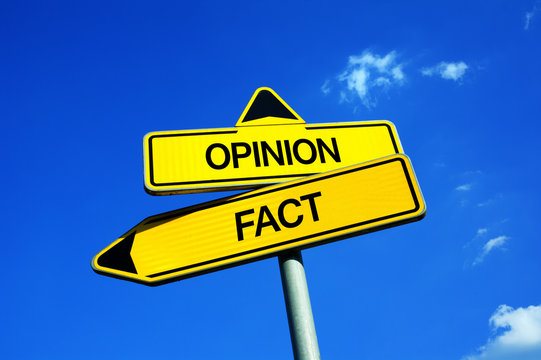Summary
Students will work through various activities to gain a working understanding of facts versus opinions. Students will use nonfiction text to learn facts about a historical figure and then use facts to support their opinion about the person in a “battle”. Students will be able to distinguish the difference between facts versus opinions and will be able to support their answer through personal research and knowledge.
Essential Question(s)
What is a fact? What is an opinion? Why is knowing the difference important? How can we use facts to support an opinion?
Snapshot
Engage
Students discuss observations they make based on a given landscape to form an opinion about the region the picture represents.
Explore
Students participate in a fact and opinion card sort.
Explain
Students classify statements as fact or opinion and explain their reasoning to a partner.
Extend
Students are engaged in a hypothetical competition for two assigned historical figures to compete against each other. Students use factual information to support their opinions of who will win the battle.
Evaluate
Students demonstrate understanding by writing 2 facts and 1 opinion about the lyrics and music in a song.
Materials
Pictures of landscapes (found through https://search.creativecommons.org/)
Paper
Pencils
Index cards
Who Wins?: 100 Historical Figures Go Head-to-Head and You Decide the Winner! by Clay Swartz
5 songs with lyrics and music
Engage
20 Minute(s)
Pass out 4 pictures of various landscapes with distinctive characteristics. When choosing the pictures of landscapes for this activity choose areas students should have a general familiarity with based on prior knowledge. Have students work in groups of 3 to 4. Students will choose one picture to discuss at their table to identify what region they think the picture represents. Using “facts” from the picture, students can form an opinion about the location/ region of the landscape depending on what specific geographical understandings students possess.
After a given amount of time, 2 to 5 minutes depending on your groups, have groups share their observations with the class.
Explore
20 Minute(s)
Create a Card Sort with facts and opinions. For example, one card might state “the sun is hot”. Another may say, “it is hot outside.”
Using the same groups from the engage activity, pass out 12 - 16 shuffled cards to each group. Ask students to sort the cards without a deeper explanation. After each group is finished, ask why each group sorted the cards in a particular way.
After further discussion, if needed, provide the terminology of fact and opinion.
During the part of the class discussion, start developing a working Anchor Chart with the class and create descriptions of facts and opinions to refer back to as needed.
Explain
30 Minute(s)
Using the Anchor Chart, create class definitions for FACT and OPINION.
Ask students to think about things they have said that day or week. Give each student four index cards to write down one statement they made on each of the four index cards.
Model this by sharing your own example of a statement you said that could be defined as a fact and one that can be defined as an opinion. Then, have students determine if each statement they wrote down is either a fact or an opinion. Let students discuss their statements and classifications with an elbow or table partner. Student statements could be added to the Anchor Chart.
Extend
60 Minute(s)
Provide partner groups with two biographies or nonfiction passages about a famous person in history or using the book Who Wins?: 100 Historical Figures Go Head-to-Head and You Decide the Winner! by Clay Swartz, assign two brief biographies from the book.
Then, assign each group a hypothetical competition for the two assigned historical figures to compete against each other. For example, in the book, you could pair Abraham Lincoln and John Glenn against each other to battle in a Ping Pong Championship battle or, Cleopatra and Louis Armstrong could compete in a powerlifting competition. During the process students will research each famous person, investigating facts for accuracy provided in the passages or biographies for accuracy as need. Students will use a Google document or worksheet to gather facts.
Using these facts as support, students will work together to draft an opinion essay about the battle results. Students can share their essays with the whole class at the end of the assignment and vote to see if the class agrees.
Evaluate
45 Minute(s)
Review the essential questions with the class:
What is a fact?
What is an opinion?
Why is knowing the difference important?
How can we use facts to support an opinion?
Collaborating with the school music teacher, select songs students have a working knowledge of from previous music lessons. In music class or your own classroom display the music and lyrics for each song to the with the whole class. Do this one song at a time. Ask students to document 2 facts and 1 opinion about each song to demonstrate their understanding of the essential questions. Documentation can be through a Google Form, Google Doc or worksheet depending on available resources.
Gifted and Talented Supplemental Choice Board
During the Extend portion on the lesson students can be given the option of a Choice Board to complete instead of an essay to share their opinion of their assigned historical figures battle. For example, students may write a play to reenact the hypothetical battle, write a song or create a Google Slide with facts and opinions outlining who would win.
Resources
K20 Center. (n.d.). Anchor charts. Strategies. https://learn.k20center.ou.edu/strategy/58
K20 Center. (n.d.). Card sort. Strategies. https://learn.k20center.ou.edu/strategy/147
K20 Center. (n.d.). Choice boards. Strategies. https://learn.k20center.ou.edu/strategy/926
Swartz, C. (2016, July 12). Who wins?: 100 historical figures go head-tohead and you decide the winner! (T. Booth, Illus.). Workman Publishing Company.


